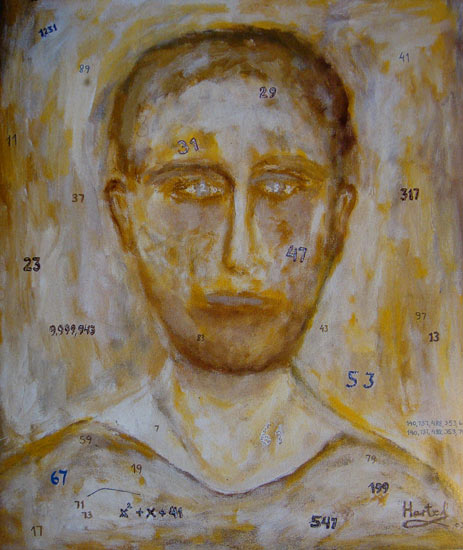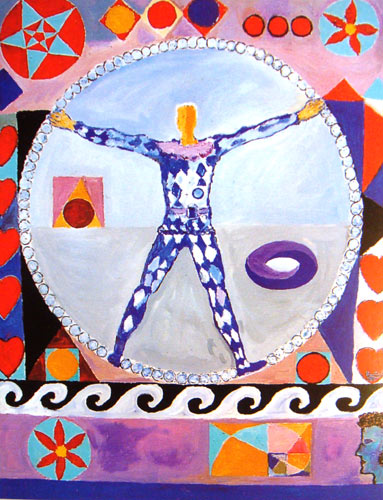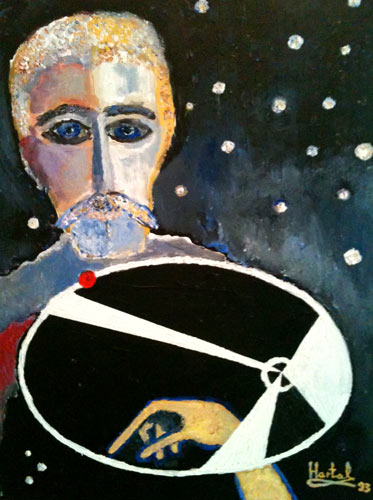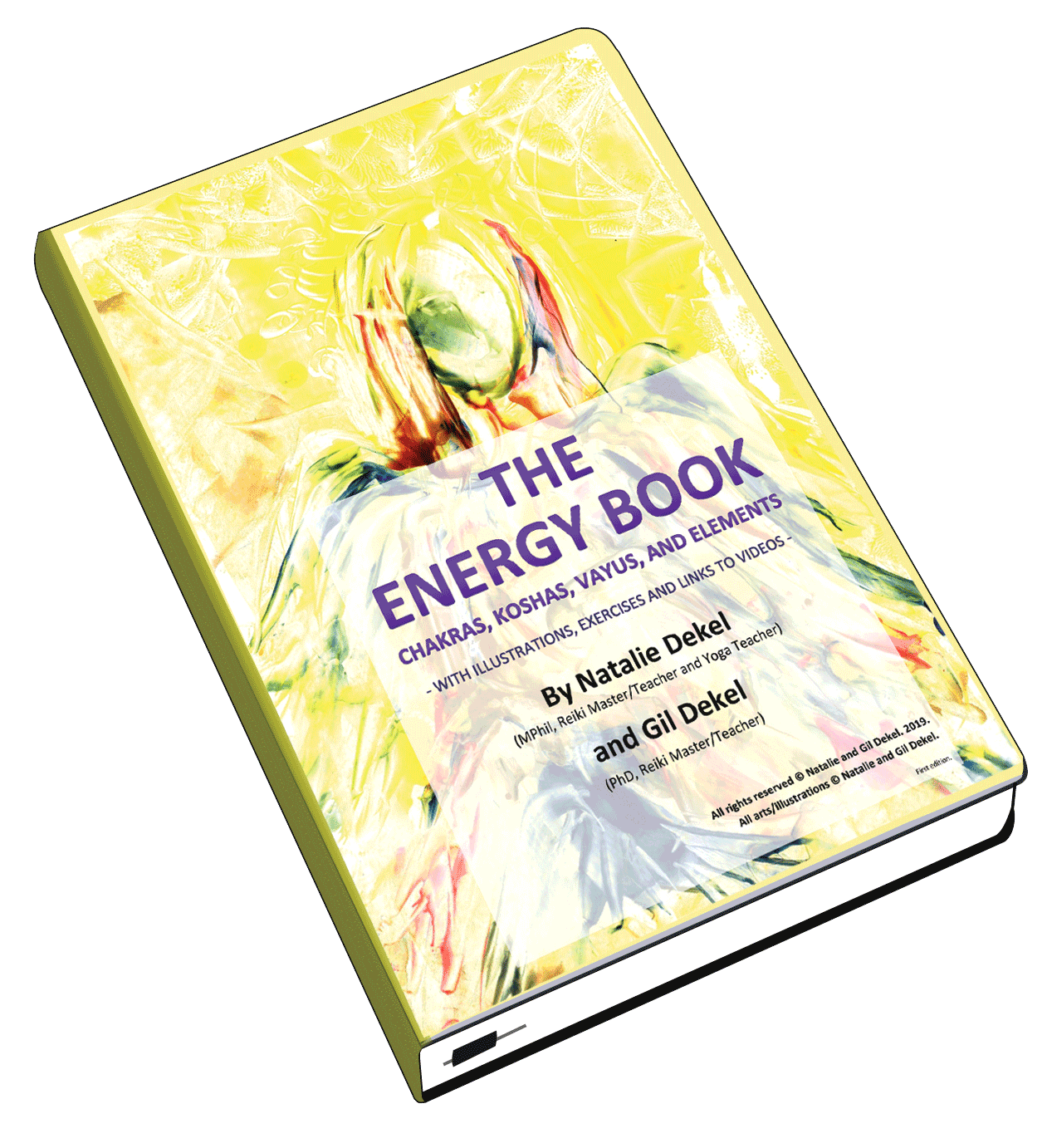Part 4 of 5. Read the previous part… by Paul Hartal.
Chapter 4: Unverifiable Theories
Although Einstein had made major contributions to the development of quantum theory, in his eyes the new branch of physics was incomplete. He could not accept the idea that on the atomic level blind chance and unpredictability governed nature, which scientists could understand only in probabilistic terms. For his part he remained confident that the universe did not run by random statistical events.
Once, in a conversation with Niels Bohr (1885-1962), Einstein expressed the view that “God does not play dice” with the world. But Bohr riposted: “Einstein, don’t tell God what to do” (12).
Quantum effects play a central role in many modern technological inventions, among them lasers, microchips, transistors, electronic microscopes and devices of magnetic resonance imagery. Yet contemporary theoretical physics appears to pursue pure mathematical models guided by the aesthetic beauty of analysis and equation.

Figure 5: ‘Prime Numbers’, Acrylic on canvas, 60 cm x 50 cm, 2003.
Prime Numbers are integers that can be divided evenly only by one and by themselves. They are arithmetical atoms, out of which all other numbers are built. They also hold one of the greatest mysteries in the quest for human knowledge. Since ancient times mathematicians have searched for an underlying formula that would enable them to generate primes and still they cannot predict when the next prime will crop up. Moreover, Primes play a pivotal role in banking and e-commerce because they serve as armature in digital security systems.
The String Theory in particle physics, for example, attempts to unite the Theory of Relativity with Quantum Mechanics. It posits that fundamental filaments are miniscule one dimensional loops or open lines of vibrating energy in a universe in which space-time has eleven dimensions. The theorists envision the strings as extremely small entities, of Planck length and time, so tiny that below them conventional notions of space and time break down (13).
Alas, basic ideas in physics of today, such as String Theory and the Theory of Parallel Universes, are not amenable to testing by scientific experiments and so they remain unverifiable (14).
In 1931 the Viennese logician Kurt Gödel (1906-1978) demonstrated that the ambition of the Queen of Sciences to create a complete axiomatic formalization of the Realm of Mathematics was doomed to failure. His theorem proved that every consistent mathematical construct remains incomplete, because in each setup, formulae ought to be constructed that either defy proof or refutation within the system.
A pioneer of modern astronomy, Johannes Kepler (1571-1630) described the motions of the planets in the solar system. His three laws later became the lighthouse that guided Newton to formulate his theory of gravitation. The painting refers to two of Kepler’s laws: (1) Planets orbit the sun in an ellipse of which the sun is at one focus and (2) A planet moves faster when closer to the sun than it does when farther away; hence the line between a planet and the sun sweeps out equal areas in equal times.
Moreover, in order to prove the consistency of a mathematical construct, the mathematician must employ axioms that are external to the system. Gödel‘s Theorem emerged in the 20th century as a breakthrough discovery about the limits of mathematics. It implies that the finite net of the human mind cannot catch all truths and that all our formal statements concerning truth will always be partial (15).
Mathematics is a symbolic universe invented by the human mind. The path from observation of phenomena to hypothesis leads through the labyrinths of intuition. The trail from fact to theory follows the crevasses of imagination. The act of creation evolves in irrational thrusts. Only part of it can be analyzed logically, or explained rationally.

Figure 7: ‘Meditation’, Acrylic on canvas, 60 cm x 45 cm, 2000 (Collection of Hanseo University Art Museum, Seoul).
This painting features stylized geometrical objects that include pentagrams, circles, squares, rectangles, wave motifs and an impossible figure, which looks like a torus. The harlequin holding a symbolic wheel of life stands with twisted feet in non-Euclidean hyperspace. The decorative flower petals and the hearts create a bridge between the logical universe of mathematics and the world of emotions. Right, at the bottom, a human face in profile wonders the aesthetic proportions of the golden ratio (0.618) in a set of rectangles with a logarithmic spiral.
In June 1992 I attended an Art and Mathematics conference held at the State University of New York at Albany. More than 150 artists and mathematicians came to the convention to discuss topics of overlapping interest. To my considerable surprise most of the mathematicians considered themselves as artists, and many of them regularly exhibited their work at museums and galleries.
“A mathematician, like a painter or a poet, is a maker of patterns”, said the Cambridge Professor of Mathematic, G. H. Hardy (1877-1947). And he added: “The mathematician’s patterns, like the painter’s and poet’s, must be beautiful; the ideas, like the colors or the words, must fit together, in a harmonious way. Beauty is the first test: there is no permanent place in the world for ugly mathematics” (16).
16 July 2010.
© Paul Hartal, Montreal, Canada.
References (for part 4)
12. Leonard Susskind, The Black Hole War: My Battle with Stephen Hawking to Make the World Safe for Quantum Mechanics, New York: Little Brown, 2008, p.82
13. Brian Greene, The Fabric of the Cosmos, New York: Random House, 2005
14. David Lindley, The End of Physics: The Myth of a Unified Theory, New York: Basic Books, 1993
15. Michael Guillen, Bridges to Infinity, Los Angeles: Jeremy P. Tarcher, 1983
16. G. H. Hardy, A Mathematician’s Apology, London: Cambridge University Press, 1984, p. 84-5



 - Reading with Natalie, book here...
- Reading with Natalie, book here...